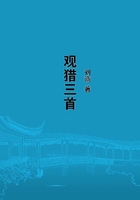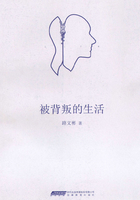"And he vomited out the stone first, as he had swallowed it last." The swallowed children emerged alive, and Zeus fixed the stone at Pytho (Delphi), where Pausanias had the privilege of seeing it, and where, as it did not tempt the cupidity of barbarous invaders, it probably still exists. It was not a large stone, Pausanias says, and the Delphians used to pour oil over it, as Jacob did to the stone at Bethel, and on feast-days they covered it with wraps of wool. The custom of smearing fetish-stones (which Theophrastus mentions as one of the practices of the superstitious man) is clearly a survival from the savage stage of religion. As a rule, however, among savages, fetish-stones are daubed with red paint (like the face of the wooden ancient Dionysi in Greece, and of Tsui Goab among the Hottentots), not smeared with oil.
Theog., 460, 465.
Theog., 498.
x. 245.
Gen. xxviii. 18.
Pausanias, ii. 2, 5. "Churinga" in Australia are greased with the natural moisture of the palm of the hand, and rubbed with red ochre.--Spencer and Gillen. They are "sacred things," but not exactly fetishes.
The myth of the swallowing and disgorging of his own children by Cronus was another of the stumbling-blocks of Greek orthodoxy. The common explanation, that Time () does swallow his children, the days, is not quite satisfactory. Time brings never the past back again, as Cronus did. Besides, the myth of the swallowing is not confined to Cronus. Modern philology has given, as usual, different analyses of the meaning of the name of the god.
Hermann, with Preller, derives it from , to fulfil. The harvest-month, says Preller, was named Cronion in Greece, and Cronia was the title of the harvest-festival. The sickle of Cronus is thus brought into connection with the sickle of the harvester.
Preller, Gr. Myth., i. 44; Hartung, ii. 48; Porphyry, Abst., ii. 54. Welcker will not hear of this etymology, Gr. gott., i. 145, note 9.
The second myth, in which Cronus swallows his children, has numerous parallels in savage legend. Bushmen tell of Kwai Hemm, the devourer, who swallows that great god, the mantis insect, and disgorges him alive with all the other persons and animals whom he has engulphed in the course of a long and voracious career. The moon in Australia, while he lived on earth, was very greedy, and swallowed the eagle-god, whom he had to disgorge. Mr. Im Thurn found similar tales among the Indians of Guiana. The swallowing and disgorging of Heracles by the monster that was to slay Hesione is well known. Scotch peasants tell of the same feats, but localise the myth on the banks of the Ken in Galloway. Basutos, Eskimos, Zulus and European fairy tales all possess this incident, the swallowing of many persons by a being from whose maw they return alive and in good case.
Bleek, Bushman Folk-lore, pp. 6, 8.
A mythical conception which prevails from Greenland to South Africa, from Delphi to the Solomon Islands, from Brittany to the shores of Lake Superior, must have some foundation in the common elements of human nature. Now it seems highly probable that this curious idea may have been originally invented in an attempt to explain natural phenomena by a nature-myth. It has already been shown (chapter v.) that eclipses are interpreted, even by the peasantry of advanced races, as the swallowing of the moon by a beast or a monster. The Piutes account for the disappearance of the stars in the daytime by the hypothesis that the "sun swallows his children". In the Melanesian myth, dawn is cut out of the body of night by Qat, armed with a knife of red obsidian. Here are examples of transparent nature-myths in which this idea occurs for obvious explanatory purposes, and in accordance with the laws of the savage imagination. Thus the conception of the swallowing and disgorging being may very well have arisen out of a nature-myth. But why is the notion attached to the legend of Cronus?
The myth of Cronus and the swallowed children and the stone is transferred to Gargantua. See Sebillot, Gargantua dans les Traditions Populaires. But it is impossible to be certain that this is not an example of direct borrowing by Madame De Cerny in her Saint Suliac, p. 69.
Compare Tylor, Prim. Cult., i. 338.
That is precisely the question about which mythologists differ, as has been shown, and perhaps it is better to offer no explanation.
However stories arise--and this story probably arose from a nature-myth--it is certain that they wander about the world, that they change masters, and thus a legend which is told of a princess with an impossible name in Zululand is told of the mother of Charlemagne in France. The tale of the swallowing may have been attributed to Cronus, as a great truculent deity, though it has no particular elemental signification in connection with his legend.
This peculiarly savage trick of swallowing each other became an inherited habit in the family of Cronus. When Zeus reached years of discretion, he married Metis, and this lady, according to the scholiast on Hesiod, had the power of transforming herself into any shape she pleased. When she was about to be a mother, Zeus induced her to assume the shape of a fly and instantly swallowed her.
In behaving thus, Zeus acted on the advice of Uranus and Gaea. It was feared that Metis would produce a child more powerful than his father. Zeus avoided this peril by swallowing his wife, and himself gave birth to Athene. The notion of swallowing a hostile person, who has been changed by magic into a conveniently small bulk, is very common. It occurs in the story of Taliesin.















